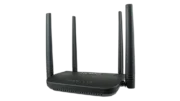As I’m sitting here, the core temperature of my computer is 79° Celsius. For those who think old-school, that’s a scorching 174 degrees in the good old Fahrenheit scale. The computer’s fans are wailing, and the temp isn’t rising, but that’s one hot chip. It doesn’t always run this hot but when there are some long processes like virus scanning or video encoding going on, it gets pretty scorchy in there.
I’m not worried about it, because those fans are doing their job. Yes, this heat is probably lowering the lifespan of the computer and I’m not super happy about it. But, a computer is a tool and it’s designed to be used. But, if nothing else it’s a good topic for an article.
The number one reason
Heat is a byproduct of all electrical processes. Sometimes it’s only a little bit of heat, and sometimes it’s a lot. It depends on what’s being done. In a normal electrical circuit, there isn’t a lot of heat being generated. If an extension cord feels more than slightly warm to the touch, it’s actually probably dangerous and should be replaced with one that is more heavy-duty.
I was actually surprised to find that the real reason for heat in electrical and electronic components is something we don’t think of: friction.
As electrons go from place to place, they physically bump into each other and into the material they are passing through. This creates friction just the same way that rubbing your hands does, just the same way that sanding a block of wood does. Friction translates potential energy into kinetic energy, which releases heat as a byproduct. Or, to put it more simply, stuff gets hot when you rub it together.
So, a computer chip that is doing more work will naturally generate more heat because there are more electrons doing more things and going to more places.
Another reason… poor engineering
Now, that sounds like a really cranky statement. “Poor engineering” makes it sound like somehow I think I could do better. But really that’s not what I mean. What I mean is that a lot of processors aren’t really designed with power management or heat management in mind. Historically, the answer to hot chips has been more fans. That’s not really the best solution. The best solution is to design chips to use less power and be more efficient. Designing to limit waste heat often makes processors more efficient in other ways.
Because there’s no room for a fan in your phone, most phones are designed to deal with heat more efficiently and when possible, not generate it at all. That discipline is slowly moving back to conventional computers. Although few people view their laptops or desktops as “glamorous,” no one likes to hear the howl of a fan. No one likes a laptop that’s bigger or heavier than it needs to be.
Is there anything that a regular user can do?
There probably isn’t anything that you, the user, can do about heat generation from your devices. You could get a cooling pad like this one, which would help with heat dissipation. It wouldn’t help with heat generation and actually makes the whole thing less power efficient because you’re powering the cooler. The only thing you can do in the long run is to choose devices with lower power consumption and ones that have been tested to have better heat dissipation.
And, of course, shop for the things you want at Solid Signal.





